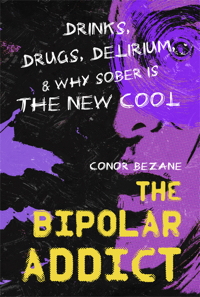 Raised on smartphones, Snapchat, and Spotify, millennials are now experiencing the highest levels of major depression among any other demographic group.
Raised on smartphones, Snapchat, and Spotify, millennials are now experiencing the highest levels of major depression among any other demographic group.
New info released by the Blue Cross Blue Shield Association (BCBSA) shows spikes in depression among young people. According to the latest data, depression cases have risen by 33 percent since 2003.
This is dour data for adolescents and millennials. Among them, 65 percent more girls and 47 percent more boys are experiencing major depression and have been clinically diagnosed. The statistic is staggering.
These new findings come on the heels of the second season of 13 Reasons Why — a show about modern-day teenagers and their struggles with depression, suicide, self-harm, bullying, drugs, and alcohol. The show holds a mirror up to this generation, much like My So-Called Life or The Real World did for Generation X in the ‘90s, though less visceral.
While critically acclaimed and popular among both adults and teens, 13 Reasons Why has set off red flags among some parents, who believe it may glorify nefarious behavior. To mollify those parents, the show’s producers have added a public service announcement at the beginning of episode one, urging teenagers to seek help if they find themselves in crisis, and a reprise of that warning during the end credits of each episode.
According to the BCBSA report, depression is the second most common condition, behind high blood pressure, among people who have health insurance.
The rate of depression is 4.4 percent of the total population, or about nine million people who are insured.
Not only are depression rates ascending, but life expectancy is declining by 10 years for those who are depressed, the study finds.
Depending on where you live, depression may affect you at greater levels. Those in the Pacific Northwest and New England have higher rates of depression as well as parts of the South and Midwest.
Sunny Hawaii has the lowest rate of depression at two percent, while the highest rate is in Rhode Island at six percent. Only Hawaii showed a small decrease in diagnoses since 2003.
Drinking and drugging are rampant among depressed teenagers, who are seven percent more likely to have a substance abuse problem.
According to the report, costs of healthcare will trend significantly higher as depressed millennials grow older.
These findings show that depression rates are only increasing as time elapses, and with depression rates rising, so will suicide rates. According to the American Foundation for Suicide Prevention, suicide is the leading cause of death for people between the ages of 10 and 34, i.e. millennials. Every day, approximately 123 Americans kill themselves. It happens once every 11.7 minutes.







